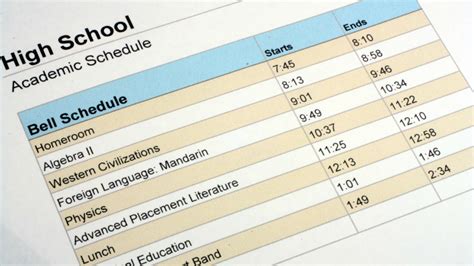Reclassification in high school refers to the process of moving a student from one grade level to another. It is typically done to allow students to progress at a faster pace, or to catch up if they have fallen behind. While reclassing can be a beneficial option for some students, it is important to carefully consider the pros and cons before making a decision.

Benefits of Reclassing
- Accelerated learning: Reclassing can allow students to take more challenging courses and progress through their education at a faster pace. This can be especially beneficial for students who are highly motivated and capable of handling a more rigorous academic workload.
- Catch up: Reclassing can also be an option for students who have fallen behind in their studies and need to catch up. By moving to a lower grade level, students can receive the extra support and instruction they need to succeed.
- Flexibility: Reclassing can provide students with more flexibility in their education. For example, students who want to participate in extracurricular activities or travel may find that reclassing allows them to do so without falling behind in their studies.
Drawbacks of Reclassing
- Social challenges: Reclassing can sometimes lead to social challenges for students. Students who are younger than their classmates may feel out of place or have difficulty making friends. Additionally, students who are older than their classmates may feel isolated or bored.
- Academic challenges: Reclassing can also pose academic challenges for students. Students who move to a higher grade level may find that the coursework is too challenging, while students who move to a lower grade level may find that the coursework is too easy.
- Emotional challenges: Reclassing can also be emotionally taxing for students. Students may feel overwhelmed by the pressure to succeed or they may struggle to adjust to their new classmates and teachers.
How to Reclass
If you are considering reclassing, it is important to talk to your parents, teachers, and guidance counselor. They can help you assess your options and make the best decision for your individual needs.
The process of reclassing varies from school to school. In general, you will need to submit a written request to your school administration. The administration will then review your request and make a decision.
Conclusion
Reclassing can be a beneficial option for some students, but it is important to carefully consider the pros and cons before making a decision. If you are thinking about reclassing, be sure to talk to your parents, teachers, and guidance counselor to get their input.
- What is the process for reclassing in high school?
The process for reclassing varies from school to school. In general, you will need to submit a written request to your school administration. The administration will then review your request and make a decision.
- What are the benefits of reclassing?
Reclassing can provide students with a number of benefits, including accelerated learning, the ability to catch up if they have fallen behind, and more flexibility in their education.
- What are the drawbacks of reclassing?
Reclassing can also pose some challenges for students, including social challenges, academic challenges, and emotional challenges.
- How do I know if reclassing is right for me?
If you are considering reclassing, it is important to talk to your parents, teachers, and guidance counselor. They can help you assess your options and make the best decision for your individual needs.
| Pros of Reclassing | Cons of Reclassing |
|---|---|
| Accelerated learning | Social challenges |
| Catch up | Academic challenges |
| Flexibility | Emotional challenges |
| Steps for Reclassing | Timeline for Reclassing |
|---|---|
| Submit a written request to your school administration | The administration will review your request and make a decision within 30 days |
| Meet with your guidance counselor to discuss your options | If your request is approved, you will need to meet with your guidance counselor to develop a plan for your reclassing |
| Begin taking classes in your new grade level | You will typically start taking classes in your new grade level at the beginning of the next semester |
| Resources for Reclassing | Tips for Reclassing |
|---|---|
| Your school guidance counselor | Talk to your teachers and guidance counselor about your reclassing options |
| Your school administration | Be prepared to explain your reasons for wanting to reclass |
| Your parents | Make sure you have the support of your parents before you start the reclassing process |
